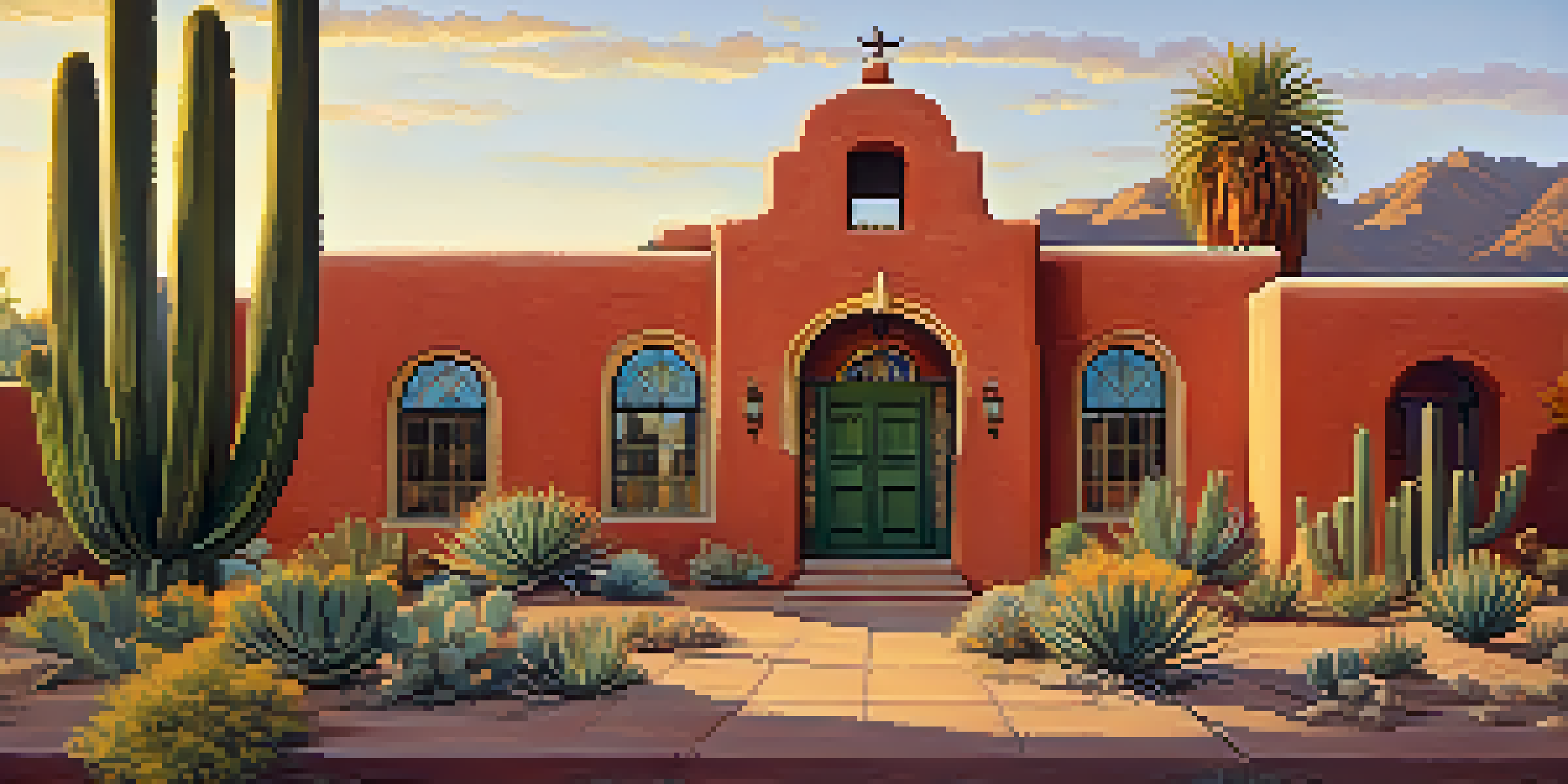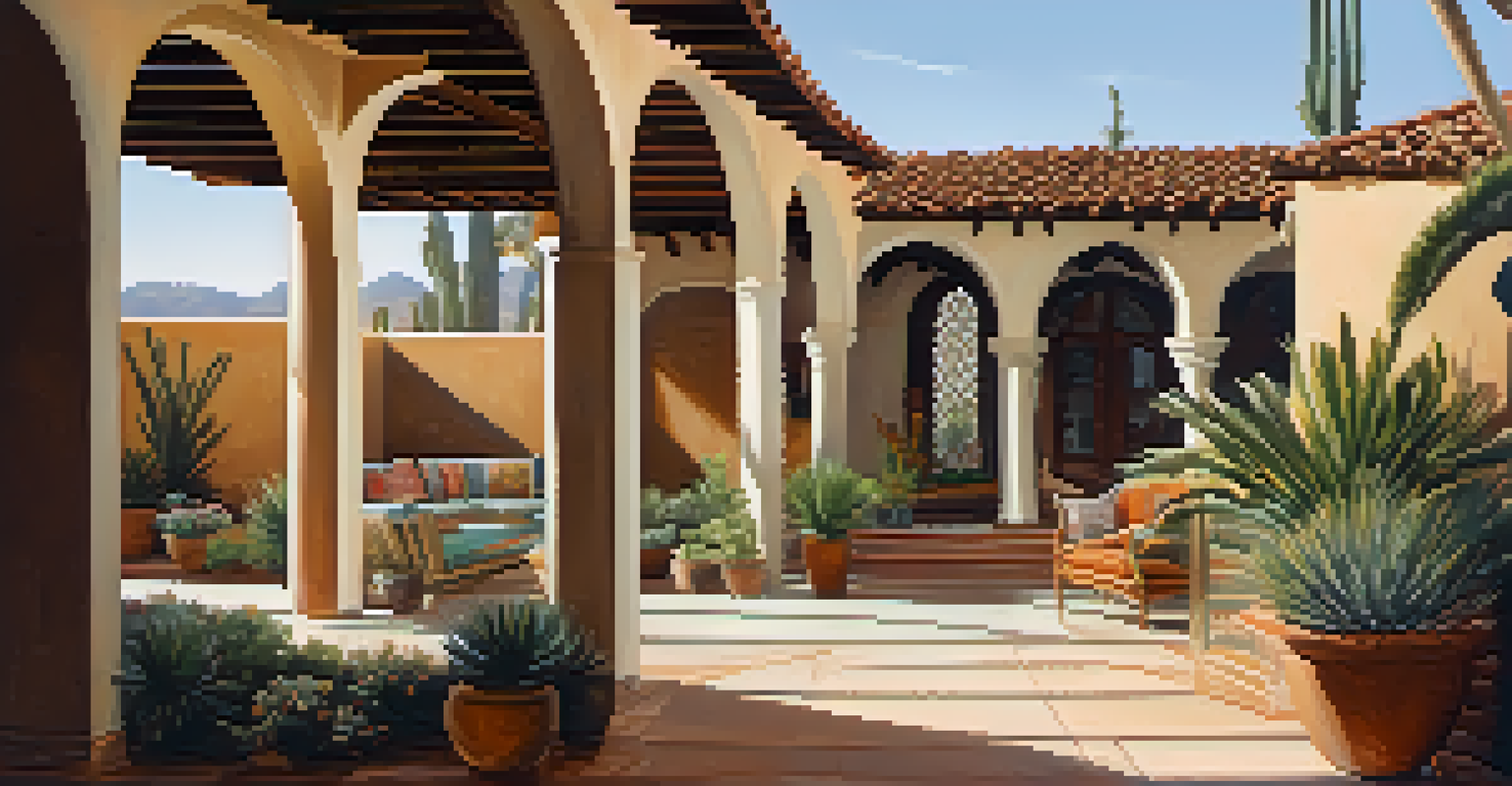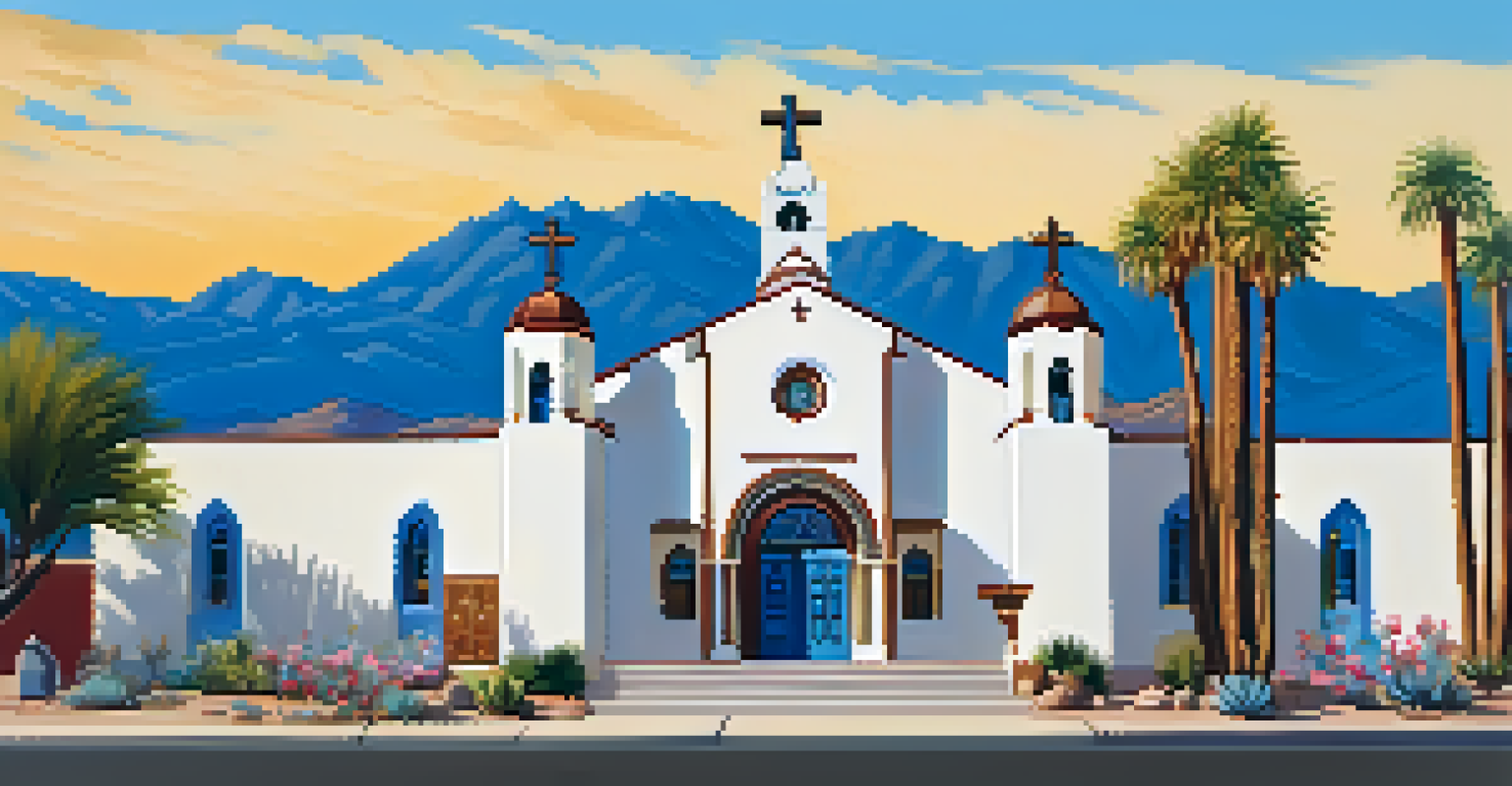Mission Revival Architecture: A Phoenix Perspective

What is Mission Revival Architecture?
Mission Revival Architecture is a style that draws inspiration from the Spanish missions of the 18th and 19th centuries. This architectural form is characterized by its stucco exteriors, red tile roofs, and arched doorways. It aims to evoke a sense of history and connection to the land, often incorporating elements of the surrounding environment.
Architecture is the learned game, correct and magnificent, of forms assembled in the light.
In essence, it blends the practicality of the local climate with artistic flair, resulting in structures that are not only functional but also visually appealing. The style gained popularity in the late 19th and early 20th centuries, particularly in areas with a strong Spanish influence, like California and the Southwestern United States. This makes it an intriguing subject for architectural enthusiasts and casual observers alike.
Phoenix, with its rich history and cultural diversity, has become a vibrant canvas for this architectural style. As the city developed, Mission Revival architecture offered a way to honor its past while accommodating modern needs, creating a unique architectural landscape.
Historical Context of Mission Revival in Phoenix
The roots of Mission Revival Architecture in Phoenix can be traced back to the late 1800s, when the city began to grow rapidly. As settlers arrived, they brought with them architectural influences from their native regions, including the Spanish missions of California. This resulted in a fascinating fusion of styles that shaped the city’s identity.

During the early 20th century, the Mission Revival style became a favorite among architects and builders, particularly as the city sought to create a distinctive cultural presence. Structures like schools, churches, and public buildings reflected this trend, showcasing the beauty and functionality of the style. The movement was not just about aesthetics; it also aimed to foster community and a connection to the land.
Mission Revival: A Historic Style
Mission Revival Architecture draws from the Spanish missions of the 18th and 19th centuries, featuring stucco exteriors and red tile roofs that reflect the cultural heritage of areas like Phoenix.
Today, this architectural heritage remains evident in many historic neighborhoods across Phoenix. When you stroll through these areas, you're not just seeing buildings; you're witnessing the story of the city’s evolution and the enduring legacy of the Mission Revival style.
Key Features of Mission Revival Buildings
Mission Revival Architecture is easily recognizable due to its distinct features. One of the most notable elements is the use of adobe-like stucco, which not only provides a rustic charm but also helps to regulate indoor temperatures in the desert climate. Red tile roofs are another signature characteristic, offering both beauty and durability.
The best way to predict the future is to create it.
Arched windows and doorways add an inviting touch, while decorative elements like wrought iron and wooden beams often enhance the overall aesthetic. These details create a warm and welcoming atmosphere that resonates with both residents and visitors. The style encourages a seamless blend between indoor and outdoor living, reflecting the lifestyle of those in sunny Phoenix.
Landscaping also plays a vital role in the Mission Revival aesthetic. Thoughtful plant selections, such as cacti and desert flora, complement the architecture, creating a harmonious relationship between the buildings and their environment. This connection to nature is a hallmark of the style, inviting people to appreciate the beauty of both the architecture and the landscape.
Prominent Examples in Phoenix
Phoenix boasts several notable examples of Mission Revival Architecture that highlight its charm. One such landmark is the historic Brophy Chapel, which features beautifully crafted arches and intricate detailing. This building not only serves as a place of worship but also stands as a testament to the style's enduring appeal.
Another prominent example is the Phoenix Union High School, showcasing the grandeur of Mission Revival with its elegant façade and spacious courtyards. This structure is a reminder of the architectural vision that shaped early educational institutions in the area. It reflects both historical significance and community pride.
Climate-Responsive Design Features
The design of Mission Revival buildings effectively addresses Phoenix's climate, with thick walls and shaded outdoor spaces promoting comfort and connection to the environment.
Additionally, the iconic Valley National Bank building, with its striking arched windows and tiled roof, captures the essence of Mission Revival in a commercial context. These buildings serve as cultural landmarks, reminding the community of their rich architectural heritage and the stories they tell.
The Influence of Climate on Design
One of the most fascinating aspects of Mission Revival Architecture is how it responds to the local climate. Phoenix, known for its scorching summers and mild winters, necessitated designs that keep homes cool and comfortable. The thick stucco walls provide excellent insulation, protecting interiors from the heat while also minimizing energy costs.
High ceilings and large windows enhance airflow, allowing for natural ventilation throughout the home. This thoughtful approach to design not only promotes comfort but also encourages a connection with the outdoors, making it easy for residents to enjoy the beautiful Arizona landscape.
Incorporating shaded porches and courtyards is another hallmark of this architectural style. These outdoor spaces provide a refuge from the sun, encouraging social interaction and community gatherings, which are integral to life in Phoenix. This climate-conscious design showcases how architecture can harmonize with environmental conditions.
Modern Interpretations and Adaptations
In recent years, there has been a resurgence of interest in Mission Revival Architecture, with modern interpretations emerging throughout Phoenix. Architects are blending traditional elements with contemporary design, creating homes and buildings that honor the past while embracing modern conveniences. This fusion allows for innovative spaces that appeal to the needs of today's residents.
For instance, many new homes incorporate Mission Revival elements, such as stucco exteriors and tile roofs, while adding modern touches like energy-efficient windows and open floor plans. This approach not only retains the character of the style but also meets the demands of a sustainable future.
Preservation Enhances Community Pride
Efforts to preserve Mission Revival structures are vital for maintaining community identity and fostering appreciation for the architectural history of Phoenix.
These adaptations reflect a growing appreciation for cultural heritage and the importance of preserving architectural identity. As Phoenix continues to evolve, the Mission Revival influence remains a vital component of the city's architectural landscape, ensuring that the past is honored while paving the way for new possibilities.
Community Impact and Preservation Efforts
The significance of Mission Revival Architecture extends beyond aesthetics; it plays a crucial role in community identity and pride. Preservation efforts are vital in maintaining the character of historic neighborhoods and ensuring that future generations can appreciate this unique architectural style. Local organizations often work tirelessly to advocate for the protection of these cultural landmarks.
Community engagement is essential in these preservation initiatives. Residents are encouraged to participate in discussions about development and restoration, fostering a sense of ownership and responsibility towards their architectural heritage. Events like neighborhood tours and educational workshops help raise awareness about the importance of preserving Mission Revival structures.

In Phoenix, these efforts not only protect the past but also enhance the quality of life for residents. By valuing and maintaining this architectural history, the community strengthens its connection to its roots, creating a richer, more vibrant urban environment for everyone.